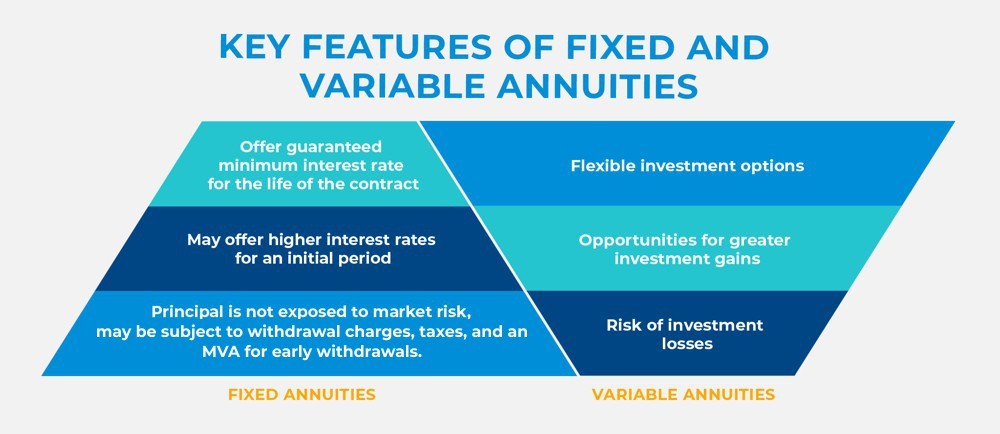All Categories
Featured
Table of Contents
This five-year basic rule and two following exceptions use just when the owner's fatality activates the payout. Annuitant-driven payments are discussed below. The first exemption to the general five-year guideline for specific recipients is to approve the survivor benefit over a longer period, not to surpass the anticipated lifetime of the recipient.
If the beneficiary chooses to take the survivor benefit in this technique, the advantages are strained like any kind of various other annuity repayments: partially as tax-free return of principal and partially taxed income. The exemption ratio is discovered by utilizing the dead contractholder's expense basis and the anticipated payouts based upon the beneficiary's life expectations (of much shorter period, if that is what the beneficiary selects).
In this method, in some cases called a "stretch annuity", the recipient takes a withdrawal annually-- the called for quantity of every year's withdrawal is based upon the same tables used to calculate the called for distributions from an individual retirement account. There are 2 benefits to this technique. One, the account is not annuitized so the beneficiary preserves control over the cash value in the contract.
The second exemption to the five-year regulation is offered just to a surviving partner. If the marked recipient is the contractholder's spouse, the spouse may choose to "enter the shoes" of the decedent. Effectively, the partner is treated as if he or she were the owner of the annuity from its creation.
Structured Annuities inheritance and taxes explained
Please note this uses only if the partner is called as a "designated recipient"; it is not readily available, for example, if a trust is the beneficiary and the partner is the trustee. The general five-year rule and both exemptions only apply to owner-driven annuities, not annuitant-driven contracts. Annuitant-driven agreements will pay survivor benefit when the annuitant dies.

For objectives of this conversation, assume that the annuitant and the proprietor are various - Fixed income annuities. If the contract is annuitant-driven and the annuitant dies, the death causes the survivor benefit and the beneficiary has 60 days to decide exactly how to take the survivor benefit based on the terms of the annuity contract
Note that the option of a partner to "step into the shoes" of the owner will certainly not be offered-- that exemption applies just when the proprietor has died but the owner didn't die in the instance, the annuitant did. If the beneficiary is under age 59, the "death" exception to prevent the 10% charge will certainly not apply to a premature distribution again, because that is readily available just on the fatality of the contractholder (not the fatality of the annuitant).
Lots of annuity firms have inner underwriting policies that reject to provide agreements that call a various owner and annuitant. (There may be weird situations in which an annuitant-driven contract satisfies a clients unique needs, yet usually the tax negative aspects will certainly outweigh the benefits - Period certain annuities.) Jointly-owned annuities might position similar issues-- or at the very least they may not serve the estate preparation feature that jointly-held assets do
Because of this, the fatality advantages should be paid out within five years of the first proprietor's fatality, or subject to both exemptions (annuitization or spousal continuance). If an annuity is held collectively in between a partner and wife it would certainly show up that if one were to die, the various other might merely proceed ownership under the spousal continuance exception.
Think that the husband and spouse called their child as beneficiary of their jointly-owned annuity. Upon the death of either proprietor, the firm needs to pay the survivor benefit to the kid, that is the beneficiary, not the making it through partner and this would most likely defeat the owner's intents. At a minimum, this example mentions the intricacy and uncertainty that jointly-held annuities present.
How is an inherited Lifetime Annuities taxed
D-Man wrote: Mon May 20, 2024 3:50 pm Alan S. wrote: Mon May 20, 2024 2:31 pm D-Man composed: Mon May 20, 2024 1:36 pm Thanks. Was really hoping there may be a device like establishing up a beneficiary individual retirement account, however resembles they is not the situation when the estate is configuration as a recipient.

That does not recognize the sort of account holding the inherited annuity. If the annuity remained in an acquired individual retirement account annuity, you as administrator should be able to designate the inherited individual retirement account annuities out of the estate to inherited Individual retirement accounts for each estate recipient. This transfer is not a taxable event.
Any type of distributions made from inherited Individual retirement accounts after task are taxed to the beneficiary that received them at their regular earnings tax rate for the year of distributions. But if the acquired annuities were not in an IRA at her death, after that there is no other way to do a straight rollover into an inherited individual retirement account for either the estate or the estate recipients.
If that occurs, you can still pass the distribution via the estate to the specific estate beneficiaries. The income tax obligation return for the estate (Form 1041) could include Type K-1, passing the revenue from the estate to the estate beneficiaries to be tired at their individual tax prices rather than the much higher estate earnings tax prices.
Annuity Interest Rates and inheritance tax

: We will produce a plan that includes the ideal products and attributes, such as improved survivor benefit, costs bonuses, and permanent life insurance.: Get a personalized method made to maximize your estate's value and minimize tax obligation liabilities.: Carry out the selected strategy and obtain continuous support.: We will help you with establishing up the annuities and life insurance policy plans, providing constant assistance to make certain the strategy continues to be efficient.
Nevertheless, should the inheritance be considered an earnings connected to a decedent, then taxes might use. Usually talking, no. With exemption to retirement accounts (such as a 401(k), 403(b), or IRA), life insurance policy proceeds, and savings bond interest, the beneficiary normally will not need to birth any earnings tax on their acquired wealth.
The quantity one can inherit from a trust fund without paying taxes depends on different factors. The government estate tax obligation exception (Annuity payouts) in the United States is $13.61 million for people and $27.2 million for couples in 2024. Nevertheless, individual states might have their very own inheritance tax policies. It is a good idea to consult with a tax obligation expert for precise information on this issue.

His mission is to streamline retired life preparation and insurance coverage, making sure that clients comprehend their selections and secure the most effective insurance coverage at unsurpassable rates. Shawn is the founder of The Annuity Specialist, an independent on-line insurance coverage firm servicing consumers across the USA. Via this platform, he and his team aim to remove the guesswork in retired life preparation by helping individuals find the ideal insurance policy protection at one of the most affordable rates.
Table of Contents
Latest Posts
Breaking Down Your Investment Choices Key Insights on Your Financial Future What Is What Is Variable Annuity Vs Fixed Annuity? Pros and Cons of Various Financial Options Why Variable Annuity Vs Fixed
Breaking Down Your Investment Choices Everything You Need to Know About Fixed Index Annuity Vs Variable Annuity What Is Immediate Fixed Annuity Vs Variable Annuity? Advantages and Disadvantages of Dif
Analyzing Strategic Retirement Planning Key Insights on Fixed Index Annuity Vs Variable Annuities Breaking Down the Basics of Investment Plans Advantages and Disadvantages of Different Retirement Plan
More
Latest Posts